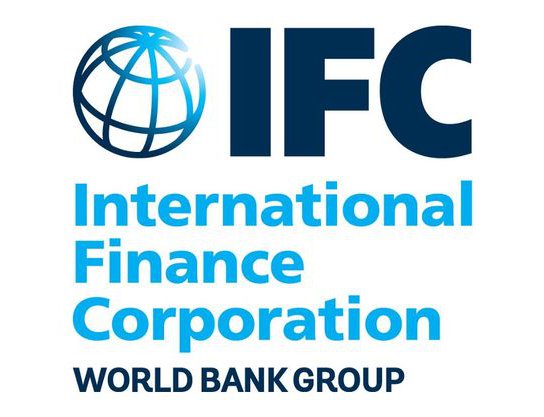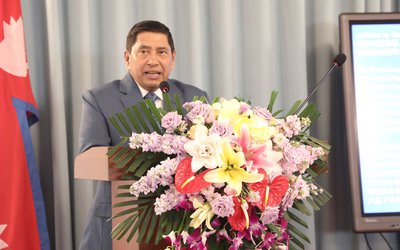
IFC, a member of the World Bank Group, has assisted Nepal Rastra Bank (NRB), the central monetary authority of Nepal, in developing the country’s first Environmental and Social Risk Management (ESRM) guidelines for the financial sector. The guidelines will help financial institutions evaluate the environment and social (E&S) risks that could arise from transactions with their clients, and take measures to mitigate them.
The traditional risks intrinsic to financial institutions pertain to credit and market. But the way their clients/investees manage the environmental and social impact of their operations can also pose substantial risks to financial institutions. If left unmanaged, these risks can adversely impact the financial institution’s reputation, and could even result in costly litigation and loss of revenue, ultimately leading to an increase in non-performing loans (NPLs).
According to press release issued by World Bank Group, the ESRM guidelines set down standards for the identification, assessment, and management of E&S risks. They list acceptable thresholds of environmental and social performance, E&S due diligence, and monitoring reports. There are general and sector-specific tools and checklists and sector-wise lists of permits and licenses, that financial institutions can apply to make their evaluations. Hydropower-related E&S criteria have been given special attention, given the country’s reliance on this form of energy. If E&S impact is unavoidable, measures have been suggested to mitigate them to the extent possible. The guidelines also provide a reporting template for all banks to report to NRB on sustainability performance. This will ensure that all banks, including private ones, adopt better environmental, social, and governance standards.
“Improved E&S risk management practices will help minimize potential risks, generate business opportunities and boost the regional competitiveness of our banks and financial institutions. They will create increased access to financing for businesses with strong environmental and social performance.” said NRB Governor Dr. Chiranjibi Nepal. Sustainable finance presents a huge opportunity as well to deliver on the Sustainable Development Goals set by the United Nations, to which Nepal is a signatory.
Nepal Rastra Bank started its journey towards a sustainable banking system in 2014 when it joined the IFC-supported Sustainable Banking Network (SBN). The ESRM guidelines have been drafted by experts at IFC and NRB using global standards, including IFC’s Performance Standards and Equator Principles, and finalized through a long process of consultations with bankers’ associations and development partners.
“Higher standards of environmental and social risk management by financial institutions are a powerful way to manage business risks, increase market trust, and attract investment, especially towards green financing,” said Wendy Werner, IFC Country Manager for Bangladesh, Bhutan, and Nepal. “IFC is looking forward to continue supporting the implementation of the ESRM guidelines in Nepal.”
As part of the Sustainable Banking Network (SBN), IFC has helped a number of countries including Bangladesh, Indonesia, Mongolia and Vietnam, either draft and implement ESRM guidelines, or strengthen the ones they had. These measures have improved the lending portfolio in these countries, reduced risks, and boosted private sector financing and green financing. NRB is an active member of the SBN.
IFC will now train officials at Nepal’s financial institutions in assessing and administering the guidelines and evaluating reports.
IFC is keen to scale-up sustainable hydropower development in Nepal, promote financial inclusion, and boost tourism infrastructure through investments in manufacturing, agri-business and services industries. As of June 30, 2017, IFC’s committed portfolio in Nepal was over $40 million.Frequently Asked Questions (FAQs) on Environmental and Social Risk Management (ESRM) for the Financial Sector
1. What does ESRM for Financial Institutions (FIs) mean?
An Environmental and Social Risk Management (ESRM) system is a framework that integrates social and environmental risk management into a financial institution’s (FI) core business processes. It is a set of actions and procedures that are implemented concurrently with the FI’s existing risk management procedures.
2. Why should banks care about E&S risks?
- If the banks’ clients are impacted by
litigation, fines, shutdown of business, loss of international market share due
to environmental and social (E&S) reasons, non-performing loans (NPL)
may increase.
- Managing E&S risk is encouraged by the
Nepal Rastra Bank (NRB). It’s going to be a compliance issue for the
financial sector.
- If E&S risks are ignored, there could be decrease in the
value of
the collateral and additional cost of cleaning up.
- Neglecting E&S risks could impact
the bank’s reputation.
- It could also erode shareholder value
and brand
promise.
3. Will raising E&S issues be a barrier to lending?
NO. As with any other risk, E&S risk will also be considered a core credit risk. Once the process of due diligence has been streamlined, it will reduce transaction processing time on the one hand, and on the other ensure that banks are not financing environmentally and socially harmful businesses. The idea is to finance high risk projects, fully knowing what the E&S risks are and managing these properly. ESRM does NOT mean saying “no” to all high risk projects.
4. What has been done on ESRM so far?
- Environmental and Social Risk Management
(ESRM) guidelines have been developed.
- NRB has launched the guidelines.
- An awareness raising process for the
financial sector has begun.
- NRB will be actively monitoring the
implementation of ESRM guidelines.
- A core group, chaired by the Deputy
Governor of NRB, has been formed to guide the implementation process.
5. What future activities are planned?
- FIs will be assisted to make process
changes required for proper implementation.
- Training and capacity building
initiatives have begun both in Kathmandu and outside the valley.
- NRB officials will be trained in
monitoring and oversight.
- Trainers will be developed along with
training modules.
6. What challenges do the FIs face in implementing ESRM?
- Lack of resources, both physical and of
personnel.
- Lack of clear guidelines for different sectors.
- The work is time consuming and perceived
as an additional responsibility by the staff.
7. How are FIs currently dealing with ESRM?
The current level of implementation varies significantly from bank to bank. Some banks don’t have any processes in place to identify and manage E&S risks, some collect Initial Environmental Examination (IEE) and Environmental Impact Assessment (EIA) reports as mere procedure, some international banks follow their global policies and processes. None currently reports on sustainability parameters.
8. Why is it not enough to rely on government approvals and licenses? Why do banks need to do their own E&S due diligence?
- The government seeks IEE and EIA reports
for transactions above a certain threshold. There are no specific requirements
for small and medium enterprises (SMEs) relating to pollution, child labor,
discrimination and harassment, unsafe working conditions, etc.
- IEE and EIA reports come with definite
recommendations. But the banks don’t have any process of dealing with E&S
risks. Hence these recommendations are not considered while making credit
decisions, nor are the borrowers’ monitored for compliance, leading to a
situation where these risks are often left unattended to. Banks need to put in
place policy and processes to manage E&S risks in lending.
- Banks are investing money, and it is
only prudent for them to identify all the risks involved before doing so, including
E&S risks. Bank representatives do site visits prior to lending. They see
the clients’ operations first-hand. Thus they are best suited to carry out proper
E&S due diligence, instead of relying only on the clients’ licenses and
permits.
9. A bank finances hundreds of industries, and chances of a fatal accident occurring in any of them is low. Why spend time and resources on something that may never happen?
It is impossible to predict where and when an accident may occur, how many lives may be lost or how much financial loss the bank may have to bear. But if banks have a process in place, they know they have taken measures to mitigate against such risk. No bank wants to be branded as one that finances polluting industries. Industrial fatalities have become a common concern, and the number of such incidents is rising every day. Unless some actions are taken, banks will have to keep on writing off loans saying E&S risks were not managed properly.
10. Will there be any threshold for such E&S due diligence? Will small loans – say, up to NPR 10 million – also have to go through this process?
The process of due diligence will be different for small loans as compared to bigger loans. Standards will not be compromised, but due diligence will be much lighter for small businesses, for the obvious reason that their impact on the environment and society is not that large.
11. If a bank plants 5,000 saplings along Kathmandu Valley, will that be considered as ESRM?
Planting 5,000 saplings is a great initiative and shows the bank’s commitment to the environment. This is considered as Corporate Social Responsibility (CSR) activity. ESRM is different. ESRM is when a bank identifies and manages the E&S risks in its lending products and services, and makes this part of its credit appraisal process.
- The Sentiment Of Monetary Policy Seems Focused On Increasing Eemand: FNCCI President Chandra Prasad Dhakal
- Jul 26, 2024
- Monetary Policy 081/82 Is Making The Economy More Dynamic: Governor Adhikari
- Jul 26, 2024
- Global IME Bank And Shashila Motors Signed Agreement Regarding Electric Vehicle loan
- Jul 26, 2024
- Lok Bahadur Thapa, permanent representative of the UN in New York, was appointed as the Vice President of ECOSOC
- Jul 26, 2024
- Leeladevi Gadtaula Became The First woman Chief Secretary
- Jul 26, 2024
















